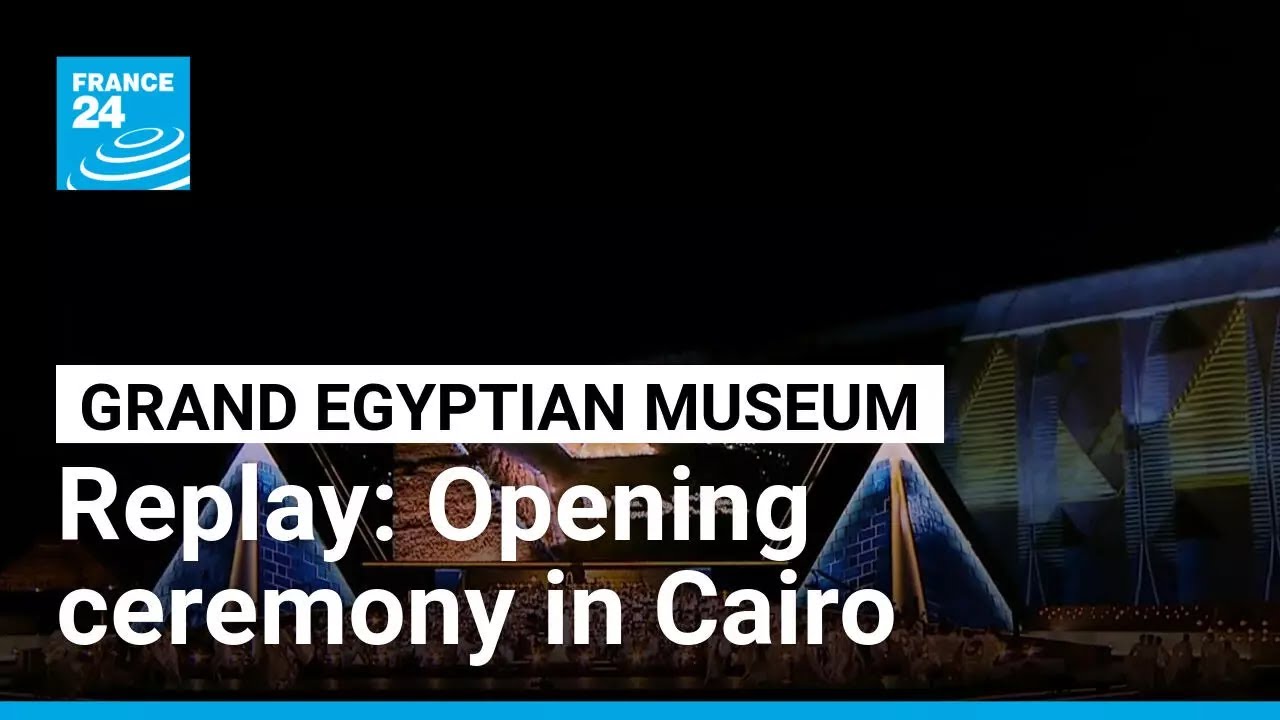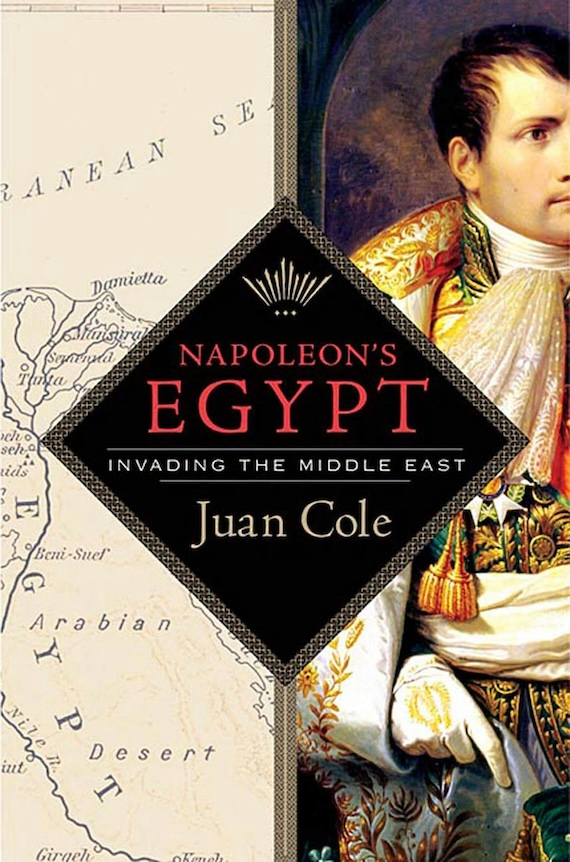Ann Arbor (Informed Comment) – Egypt’s new billion-dollar museum near the Giza pyramids opened on Saturday. It has 100,000 artifacts, including a massive statue of Ramses II (1279 BCE – 1213 BCE). It may be the biggest museum in the world.
Given that Egypt is now a rigid dictatorship with few rights for citizens, the opening of the museum could be seen as a bit pharaonic itself. But in fact it has been planned for 20 years, long before the current regime. Moreover, for reasons I will explain below, many Egyptians will benefit from it economically and they are proud of it and setting some hopes in it. Europe and its heirs often lay a claim to the mantle of “civilization,” but here is one area where they are outmatched, and Egyptians take enormous pride in the fact.
The ceremony began with an extravaganza attended by Egyptian President Abdel Fattah al-Sisi, First Lady Entesar al-Sisi, and heads of state and dignitaries from 79 countries, including presidents and prime ministers from countries like Germany, Greece, and Palestine, and royalty from Denmark, Spain and Belgium, Spain. It may be the biggest cultural event in the country since the opening of the Suez Canal in 1869, which was also attended by kings and leaders from elsewhere. It was for that occasion that the Cairo Opera House was inaugurated and Verdi’s Aïda was commissioned..
On Saturday at the inauguration of the museum, renowned Egyptian soprano Fatma Said performed.
“The Grand Egyptian Museum’s opening ceremony • FRANCE 24 English”

Replay: The Grand Egyptian Museum's opening ceremony • FRANCE 24 English
Gen. Napoleon Bonaparte’s brutal invasion and occupation of Egypt in 1798 also marked the beginning of modern Egyptology. Bonaparte brought along more than 150 scholars and scientists, among the some 50,000 men in the invasion force, who spent the occupation years 1798-1801 intensively investigating Egypt’s architecture, geography, and natural history. They sketched and took samples of plants and fish. This scholarly effort, which produced the multi-volume “Description of Egypt,” underlines the truth of the saying of French philosopher Michel Foucault that power is inextricably bound up with knowledge.

Juan Cole, Napoleon’s Egypt: Invading the Middle East. Macmillan. Click here to buy.
Of course, Muslim scholars in Egypt knew about the pyramids, and the story of Moses and Pharaoh plays a prominent role in the Qur’an. Some early medieval Muslim scholars may still have been able to read the hieroglyphs, though that knowledge was lost. But they had not developed a discipline of Egyptology, any more than Europeans had to that date.
The French scholars also paid attention to monuments such as the pyramids of Giza and the Sphinx. They did not shoot cannons at the pyramids, despite that scene in Ridley Scott’s recent film on Napoleon, as I explained to NBC news:
@staytunednbc Did #Napoleon actually shoot the #pyramids? A #history professor at the University of Michigan weighs in on what’s real about Napoleon’s time in #Egypt. #RidleyScott #JoaquinPhoenix #movie #BasedonaTrueStory #RosettaStone ♬ original sound – staytunednbc
At the time, knowledge of the hieroglyphs had been lost, but the French discovered the Rosetta Stone during the occupation. History.com explains,
- “The Rosetta Stone is a slab of granitoid stone featuring a written decree issued in 196 B.C. by a group of Egyptian clergy and Egypt’s ruler, Ptolemy V, attesting to his generosity and devoutness. The decree is written in three ways: hieroglyphics, which were used mainly by priests; Demotic, a somewhat simpler script used for everyday purposes; and ancient Greek.”

Or by check:
Juan Cole
P. O. Box 4218,
Ann Arbor, MI 48104-2548
USA
(Remember, make the checks out to “Juan Cole” or they can’t be cashed)
It wasn’t until 1822-1824 that Jean-Francois Champollion was able to read the hieroglyphs. It isn’t usually mentioned that he had some help in that regard from Egyptian Copts, whose liturgical language was still related to the old Pharaonic tongue (an Afro-Asiatic language).
That step was the first toward reading the surviving inscriptions and papyri of ancient Egypt, allowing the reconstruction of its civilization.
By 1868 an Egyptian scholar, Rifa’ah al-Tahtawi, had brought out a history of ancient Egypt in Arabic, and knowledge of their past began to affect Egyptians’ self-conception.
Egyptians gradually had adopted Arabic after the country’s incorporation into early Muslim empires, and most Muslims by the nineteenth century were Arabic-speaking Muslims. In the twentieth century, Egyptians developed a modern nationalism in which the Pharaonic heritage played a central role. The one exception was Muslim nationalism, the equivalent of our Christian nationalism, which tended to dismiss the pre-Islamic heritage as an age of ignorance, mired in polytheism and moral corruption. Muslim nationalism, as exemplified by the Muslim Brotherhood, briefly came to power in 2012-2013, but Mr. al-Sisi made a coup against then president Mohamed Morsi and persecuted the Muslim Brotherhood so vehemently that it slid into irrelevance.
Never miss an issue of Informed Comment: Click here to subscribe to our email newsletter! Social media will pretend to let you subscribe but then use algorithms to suppress the postings and show you their ads instead. And please, if you see an essay you like, paste it into an email and share with friends.
Ironically, Europeans and those who consider themselves heirs of European civilization appropriated ancient Mesopotamia and ancient Egypt as the fonts of their own culture. It is quite odd that French, British, Germans and Spanish should think that they started in ancient Egypt, but that is more or less what many text books teach the children. But then once they get to Rome (which ruled Egypt), they become nativists and construct a timeline of progress inside Europe, of Rome – Medieval Europe – Renaissance – Enlightenment – Industrial Revolution. They cut Egypt, Iraq, China and Japan out of the story, thereafter. Leaving out China is especially bizarre, but Mamluk Egypt and the Ottoman Empire were consequential for Europe and the latter was a European power.
I think it would be fair to say that most Egyptians today are proud of their civilizational inheritance from pharaonic civilization.
And it is after all a money-maker for them. Few tourists come to Egypt primarily to see the magnificent Islamic architecture, though they should. Something like 16 million tourists came to Egypt in 2024, despite the Gaza War that raged right next door. The tourism sector brought in $15.3 billion last year, some 8.5% of the Egyptian economy. The new museum is hoped to take these numbers even higher.
The sector generated 2.7 million jobs in 2024, in a desperately poor country with a work force of some 32 million. Many Egyptians depend on tourism for their livelihoods, directly or indirectly. Imagine all those who work in hotels, restaurants, guiding and hospitality. The sector has rebounded strongly since the COVID-19 pandemic, which was deadly to it.
Tourism has drawbacks, though, as a development strategy. All those millions of travelers are hard on the environment, and the industry doesn’t create a big pot of money in anyone’s hands that could be invested in real development. Egypt could be manufacturing solar panels for the African market. And it needs free speech and democracy if it is to achieve further civilizational greatness and not just remain a rentier cash cow for its military elite.


 © 2025 All Rights Reserved
© 2025 All Rights Reserved